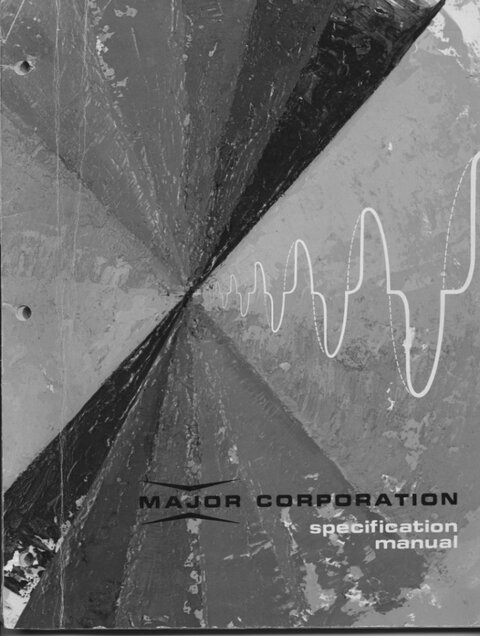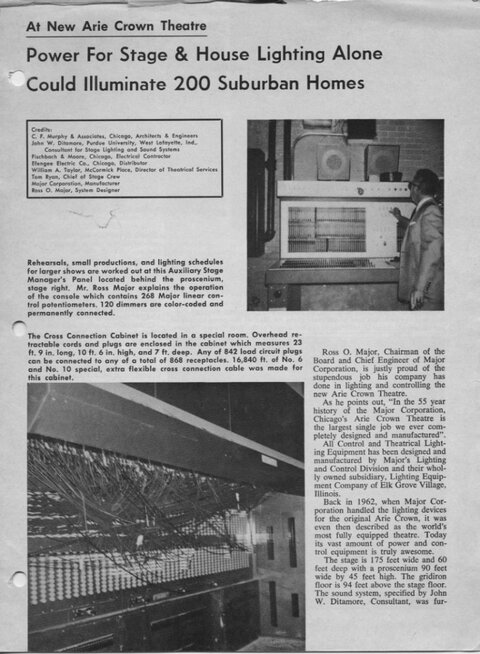Research goes on...
Forgot where I got the model numbers for the 3(4) in different models of
Leko’s I have from that brand, and now apparently I have a box spot from them I think given matching hole patterns. Have to contact the school to see when the
Gymatorium was built.
Yesterday in general research before I found the CB post about the source of LECO as an offshoot from Grand
Stage, I had found info and doccuments about a 1921 company Leco
Electric Lamp Company out of NYC. Turned out to be a architectural lighting
fixture company.
Tonight I went into the attic to get back out amongst other catalogues from the 50's - the 70's, the c.1955-57 John Carter sent Grand
Stage Lighting catalogues. Nope, no LECO brand yet - selling all kinds of other brands. Good at least starting date for the LECO brand. Derek recommended a contact at Grand
Stage that might know more, I think I have talked with him before about this LECO history. Would also be good to see if the Atheneum Theater still has Clyde’s old catalogues.... never really looked into what he had beyond getting the big
Hub binder to post on
line, but he worked there between the 50's and 90's and had a lot of stuff. Been a few years but hopefully they have not trashed it all - because there was a large amount of info.
Got some work done on the light. Restored the lamp
socket - aluminum
neutral screw part of it = interesting detail I have not seen before - normally brass as done today. Drilled out one of the grommets that
fed only two
asbestos wires, for a 3/8" NPT old style
Altman cord grip, wired it up, grounded it. Installed two 8-32 x2" round head stainless steel screws to mount the
base. They have flanged nylon spacers centering the
base and
shock mounting the
porcelain, installed a fiber pad under the
porcelain base, did some touch up paint.
To install the lamp
socket, and because there was room under the slide mechanism, I did a double
nut with external tooth lock washer between to lock it down. I can later cut down to length the overly long screws, once I figure out if a
wing nut for focus, two screw posts or one for some reason in not able to focus sticking out of the bottom,
etc. Top hinged
cover knob to the light though I am remembering that I have a red
thumb screw somewhere in parts knob storage... It would be much like the
shutter handles on the
Leko’s knobs. I wonder if perhaps this is the knob that was on another
fixture somehow I got years earlier and fate that I have one now? Wonder if it fits, but still want to do more research into the top and bottom of the
fixture before I decide where to go. Once I find information on a LECO box spot existing.
Since Grand
Stage Lighing and Chicago Spotlight combined and moved, it’s doubtful how much records from the 50/60's from the spinoff company exist but I will ask. Could be a treasure trove perhaps - they should post. Given a good printer, its easy for a receptionist to do so... just finally dropped off a stack of John Carter’s old catalogues today for them to PDF for me. I do in the early 90's remember going Grand
Stage for an interview for a job. Didn’t get the job, but did get a tour of their basement - amazing and interesting place to fabricate stuff. Than again, I grew up in Elmhurst IL. In the 80's where
Hub Electric was located, and
current my shop Manager was a draftsman for... and literally lived than a mile from me. As a high school theater student looking perhaps for the perfect job for me also as as a draftsman, I never even knew they existed. How that tour of the factory as a local student could have changed my life, much less relationship with the Shop Manager... my career. I could have been his assistant in drafting.... and how the years will have changed me and or how we get along today almost 18 years since he hired me at he
current shop.
Anyway, attached is the photo from yesterday in theorizing that given the proximity of a G-30 lamp to it’s
reflector (It does fit but is really close by like a 1/16"), it’s instead a T-20 lamp meant for the light - TBA in trying the
bench focus. Busy at work today, no chance to get a T-20
incandescent screw based lamp out my storage there or pull up
LCL data on both lamps. But note the curl of the plentium plate to slide focus perpendicular to a normal
Fresnel or box spot. Kind of like a up-side down sled - why would you do that as opposed to a railroad like slide? Bad engineering or re-engineering of this product other than it will stick where you put it.
No, my
current Shop Manager was not responsible for that... he was drafting
Hub sketch designs into blue print for a job at that
point for start in his own career. I during high school was working also on the other side of town less than a mile away also, as a maintinence person in doing stuff like re-seal coating parking lots and changing lamps or washing walls. Strange world.



